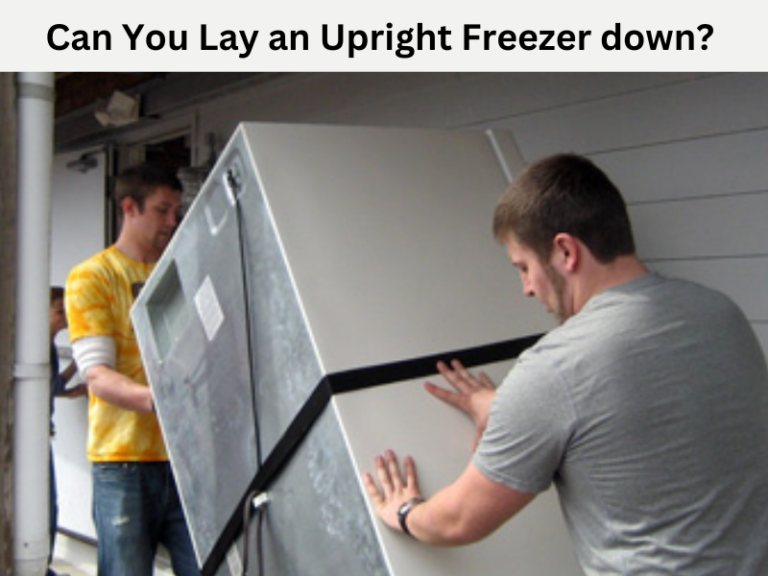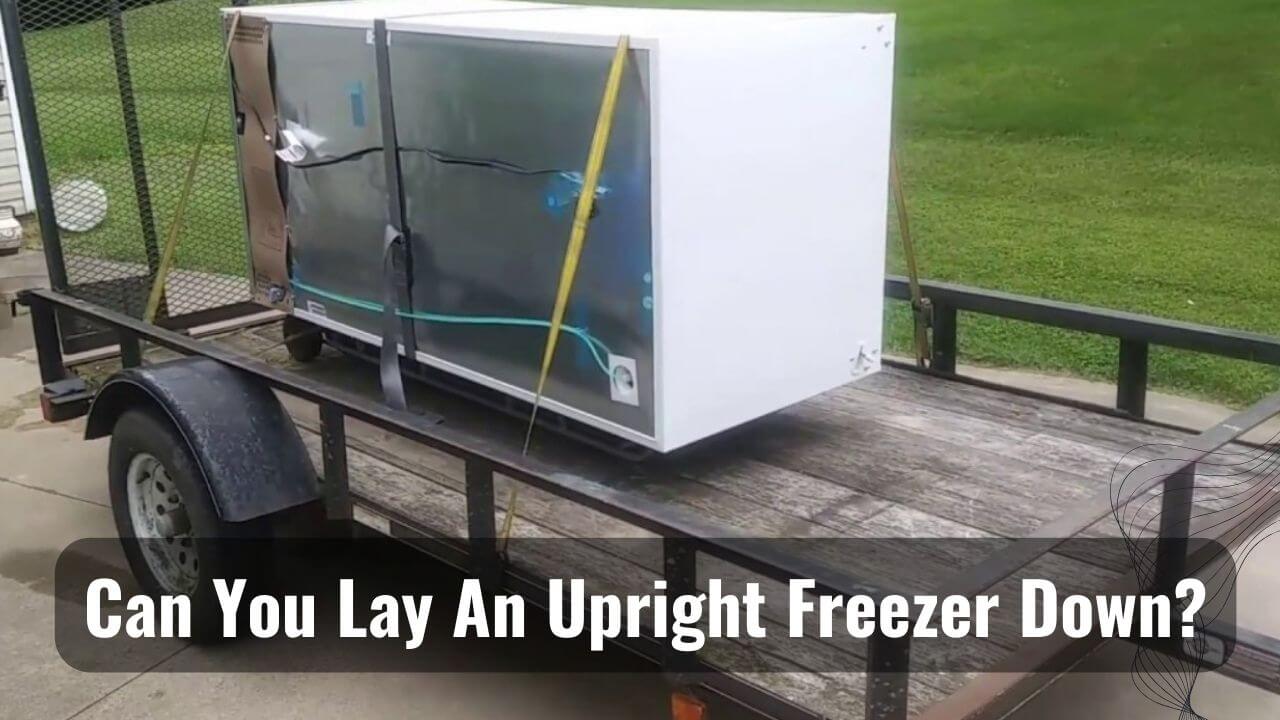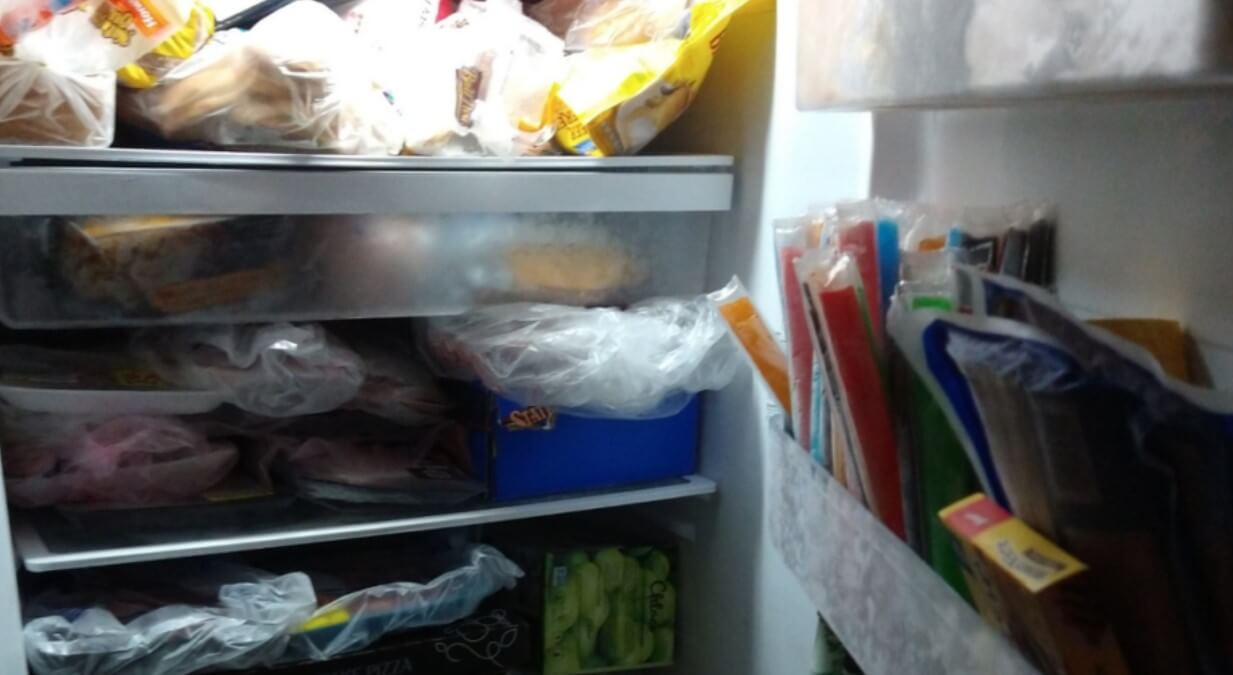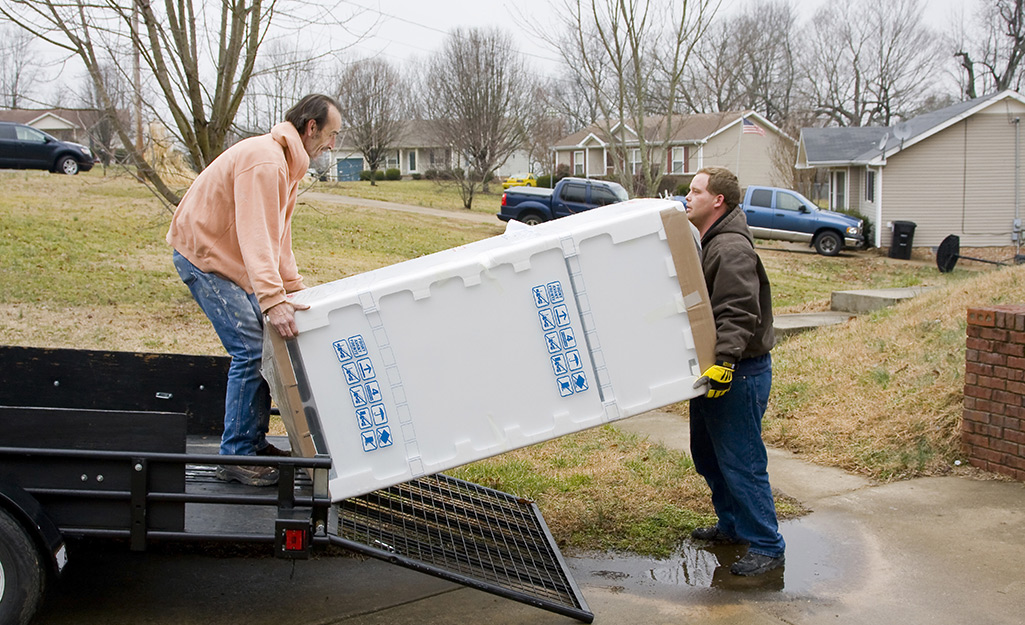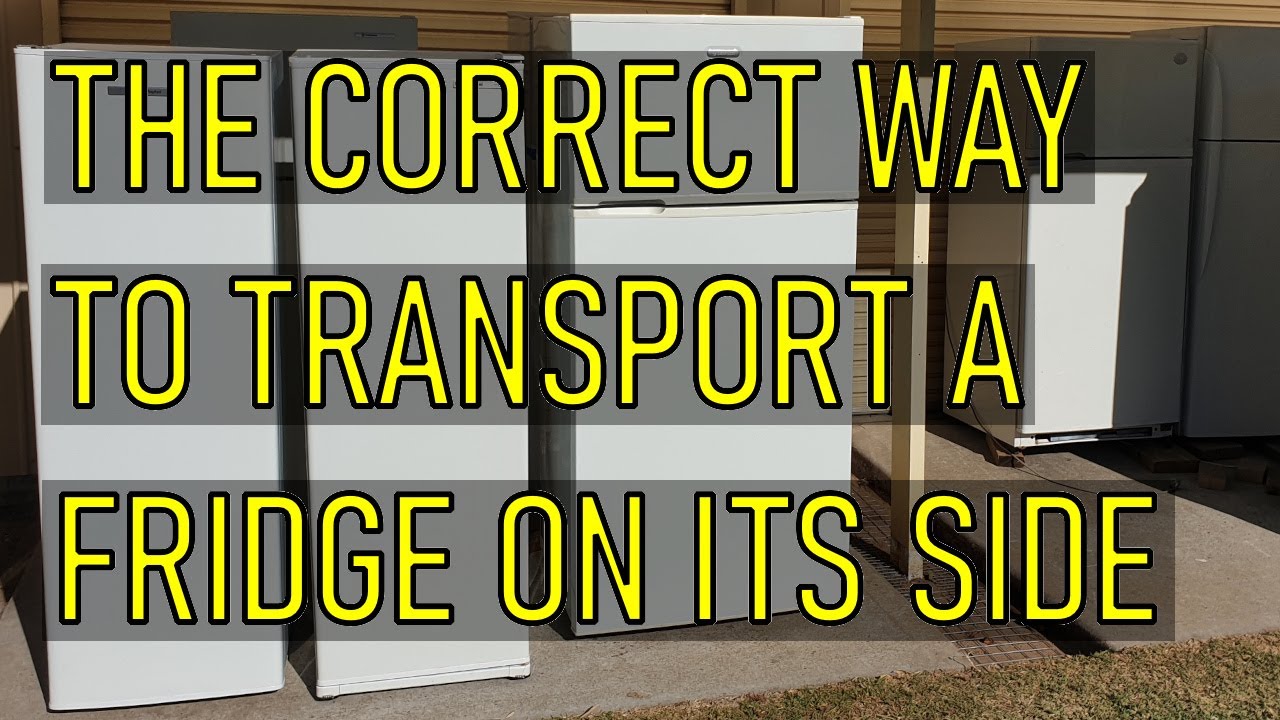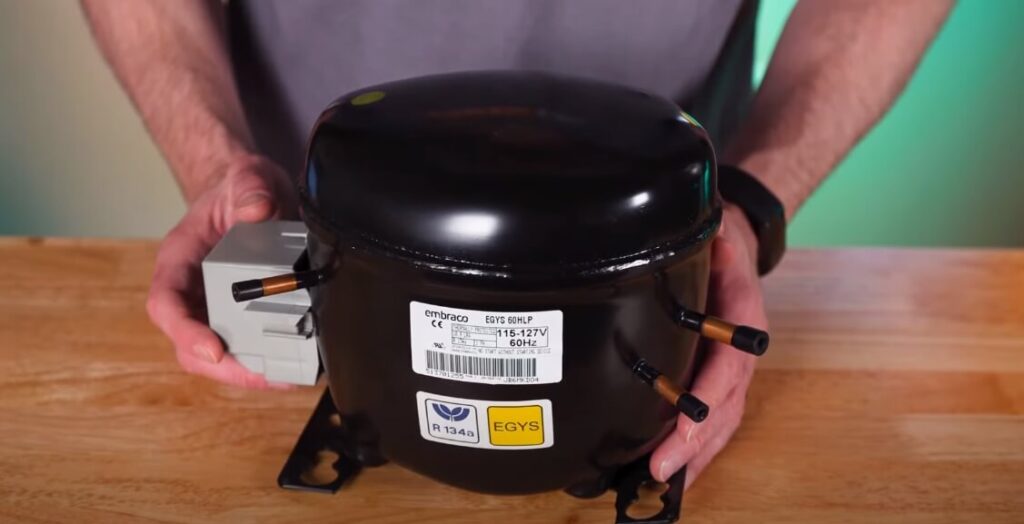Can You Lay A Upright Freezer Down To Transport It
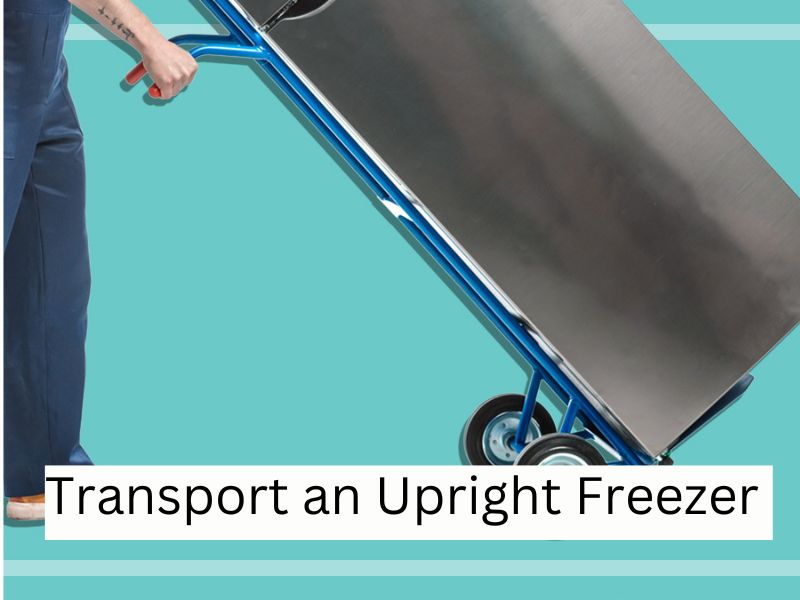
Frequently Asked Questions: Transporting an Upright Freezer
Moving an upright freezer can be a daunting task. One of the most common questions we get is about the best way to transport them. This FAQ aims to answer your pressing questions about laying an upright freezer down for transport and how to minimize potential problems.
Q: Can I lay my upright freezer down to transport it?
A: The short answer is, generally, yes, you can lay an upright freezer down for transport. However, it’s not the ideal method and comes with some considerations. Ideally, transporting it upright is always preferred to avoid potential compressor oil issues. But if you are careful, laying it down can be done.
Q: What are the risks associated with laying an upright freezer down during transport?
A: Laying an upright freezer down can pose several risks:
- Compressor Oil Migration: This is the biggest concern. The compressor contains oil necessary for lubrication. When the freezer is upright, the oil stays where it's supposed to be. Laying it down can cause the oil to flow into the refrigerant lines. If this oil gets into the cooling system, it can restrict refrigerant flow and potentially damage the compressor when you turn the freezer back on.
- Damage to Internal Components: Even with careful handling, laying the freezer down can put stress on internal components like shelves, drawers, and the compressor itself. These parts are designed to withstand vertical forces, not horizontal ones.
- Damage to Exterior: The freezer's exterior, especially the back, may not be designed to withstand the weight and pressure of being laid flat. This can lead to dents, scratches, or even more significant damage.
- Refrigerant Leaks: Though less common, improper handling can potentially damage refrigerant lines and cause a leak. Refrigerant leaks are not only harmful to the environment but can also render the freezer unusable.
Therefore, it is imperative to be extremely careful and take precautions to mitigate these risks.
Q: If I have to lay it down, what's the safest way to transport an upright freezer?
A: If transporting the freezer upright isn't an option, follow these steps to minimize the risks:
- Defrost the Freezer Completely: Allow ample time for the freezer to defrost. Remove all food items and ice. A completely defrosted freezer is lighter and less likely to leak water during transport. Clean up any excess water inside the unit.
- Secure Loose Parts: Remove any removable shelves, drawers, or bins. Wrap them separately in blankets or packing material and transport them independently. Tape down or secure any parts that cannot be removed to prevent them from shifting during transport.
- Choose the Right Side: If possible, lay the freezer down on its side where the refrigerant lines *do not* protrude significantly. This will minimize the risk of damaging these lines. Consult your freezer's manual or the manufacturer's website for guidance if available. If you have no idea which is which, lean it towards the side it is hinged to, in case it is designed to have the compressor on the opposing side of the hinge.
- Protect the Exterior: Wrap the entire freezer in moving blankets or padding. Secure the blankets with packing tape. Pay extra attention to protecting the corners and edges.
- Use a Dolly and Ramp: Use a appliance dolly to move the freezer. If you need to load it into a truck or van, use a ramp to avoid lifting it. Lifting can cause strain and potentially damage the freezer or yourself.
- Secure it in the Vehicle: Once the freezer is in the vehicle, secure it with straps or ropes to prevent it from shifting during transport. Make sure it's well-supported and cannot roll or slide around.
- Drive Carefully: Drive slowly and avoid sudden stops or turns. The gentler you are, the less likely you are to damage the freezer.
Q: How long should I wait before plugging my upright freezer back in after transporting it on its side?
A: This is the most critical step! After transporting the freezer on its side, you must allow it to sit upright for an extended period before plugging it in. This allows the compressor oil to drain back down into the compressor. The recommended waiting time is at least the amount of time it was on its side. However, 24 hours is generally considered the minimum safe waiting period. Some manufacturers recommend waiting even longer, up to 48 hours. Check your owner's manual for specific recommendations. Err on the side of caution – waiting longer is always better than not waiting long enough.
Q: What if I plug the freezer in too soon after transporting it on its side?
A: Plugging the freezer in too soon can have serious consequences. If the compressor oil is still in the refrigerant lines, it can:
- Damage the Compressor: The oil can restrict refrigerant flow, causing the compressor to work harder and overheat. This can lead to premature failure of the compressor.
- Reduce Cooling Efficiency: Even if the compressor doesn't fail immediately, the oil in the refrigerant lines can reduce the freezer's cooling efficiency. This means the freezer will have to work harder to maintain the desired temperature, using more energy.
- Clog the Capillary Tube: The capillary tube is a small, narrow tube that controls the flow of refrigerant. Oil can clog this tube, preventing the refrigerant from circulating properly and causing the freezer to stop cooling altogether.
In short, plugging it in too soon can result in costly repairs or even require you to replace the entire freezer.
Q: Are there any alternatives to laying the freezer down for transport?
A: Yes, there are alternatives, though they may require more planning or expense:
- Rent a Truck with a Lift Gate: A truck with a lift gate allows you to transport the freezer upright without having to lift it. This is the safest option for preserving the life and functionality of your freezer.
- Hire Professional Movers: Professional movers have the equipment and expertise to move large appliances safely and efficiently. They will know how to properly secure the freezer and transport it upright, if possible.
- Disassemble (If Possible): Some freezers are designed to be partially disassembled, which can make them easier to transport. Check your owner's manual to see if this is an option for your model. However, this is usually only recommended for professional technicians, to avoid damaging components.
- Sell or Donate and Buy a New One: Depending on the value and age of your freezer, it might be more cost-effective to sell or donate it and purchase a new one at your destination. This eliminates the risk of damaging the freezer during transport and saves you the hassle of moving it.
Q: What are the signs that my freezer has been damaged during transport?
A: Even with careful handling, there's always a chance that the freezer could be damaged during transport. Be on the lookout for these signs:
- Unusual Noises: After waiting the recommended time and plugging the freezer in, listen for any unusual noises coming from the compressor. Grinding, rattling, or hissing sounds could indicate damage.
- Lack of Cooling: If the freezer doesn't start cooling down within a few hours, there may be a problem with the compressor or refrigerant lines.
- Refrigerant Leaks: A strong, chemical smell could indicate a refrigerant leak. If you suspect a leak, unplug the freezer immediately and contact a qualified technician.
- Visible Damage: Check for any dents, cracks, or leaks on the exterior of the freezer.
If you notice any of these signs, contact a qualified appliance repair technician. Attempting to repair the freezer yourself could void the warranty and potentially cause further damage.
By understanding the risks and taking the necessary precautions, you can minimize the chances of damaging your upright freezer during transport. Remember, preparation and patience are key to a successful move.
